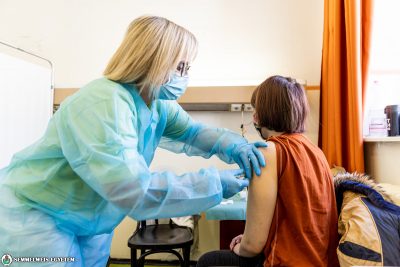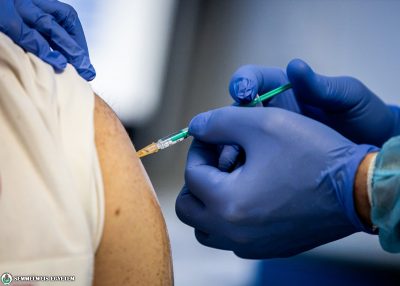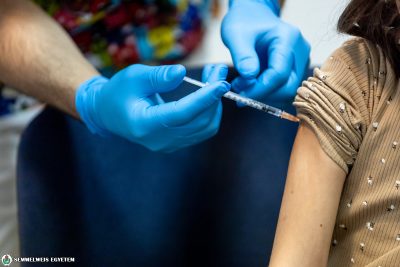According to a recent study published in Nature, the use of surgical face masks may prevent the human-to-human transmission of coronavirus and influenza virus in symptomatic patients. The study involving 246 participants tested the filtration ability of face masks.
The broad spectrum of symptoms caused by respiratory virus infections are collectively known as acute respiratory diseases or common cold. Usually, these diseases manifest in mild forms, though in certain cases they can cause severe illnesses or even death. Human-to-human transmission of these viruses can occur via direct or indirect contact, airway saliva droplets and aerosols. It is well known that hand hygiene and the use of face masks may play a crucial role in preventing the spread of the influenza virus, however their efficiency in case of other respiratory viruses (such as COVID-19) remains unclear.
Surgical masks were originally used to protect patients from wound infection and contamination that might have been caused by the wearer (surgeon) and only later were they used to prevent the infection of healthcare workers. At the same time, only in vitro data are available regarding the filtration efficiency of surgical masks.
A recent study compared the spread of coronaviruses, influenza viruses and rhinoviruses via droplet infection and aerosol. The study involved children and adults suffering from acute respiratory diseases, measured the viral content and its quantity in exhaled air and tested the filtration efficiency of surgical masks.
246 participants were registered in the study and following randomization exhalations were performed by 124 subjects wearing masks and 122 individuals without masks who also provided throat and nasal secretion samples. At least one respiratory virus was detected in 123 patients out of 246 with RT-PCR (reverse transcription polymerase chain reaction). In 111 of the cases 17 patients were identified with human coronavirus, 43 patients with influenza virus, 54 patients with rhino virus, one patient with corona- and influenza virus and two other patients with influenza- and rhino virus.
Based on the results, the rate of virus shedding was higher in samples of nasal secretion than in throat secretion samples in case of all three viruses and viral RNA could be detected from both respiratory particles and aerosol when masks were not used. In case of coronavirus without wearing a mask, the virus was detectable in 30 percent of the saliva droplet samples and in 40 percent of aerosol samples. In contrast, no virus was detected in either respiratory particle samples or aerosol samples, which means a significant difference in case of aerosol and a decreasing tendency in case of respiratory particles. Without using masks, the influenza virus was detected in 26 percent of the respiratory particles and in 35 percent of the aerosol samples, while wearing masks significantly decreased the presence of the virus in respiratory particles.
In the study the use of surgical masks significantly reduced the detectability of influenza virus RNA in respiratory saliva droplets and that of coronavirus RNA in aerosol. It also showed a decreasing tendency in the detectability of coronavirus RNA in respiratory particles. These results suggest that the use of surgical masks may prevent the human-to-human transmission of coronavirus and influenza virus in case of symptomatic patients.
Alexandra Fábián
Translation: Ágnes Raubinek
Source: https://www.nature.com/articles/s41591-020-0843-2
Respiratory virus shedding in exhaled breath and efficacy of face masks
Nancy H. L. Leung, Daniel K. W. Chu, Eunice Y. C. Shiu, Kwok-Hung Chan, James J. McDevitt, Benien J. P. Hau, Hui-Ling Yen, Yuguo Li, Dennis K. M. Ip, J. S. Malik Peiris, Wing-Hong Seto, Gabriel M. Leung, Donald K. Milton & Benjamin J. Cowling
https://doi.org/10.1038/s41591-020-0843-2


